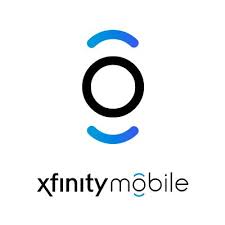 Residents of Hawaii, New Mexico, North and South Dakota, Ohio, Texas and Wisconsin will get a slight reprieve on their internet bill starting July 1, as taxes on internet access will end in the few remaining states that have been taxing service since 1998.
Residents of Hawaii, New Mexico, North and South Dakota, Ohio, Texas and Wisconsin will get a slight reprieve on their internet bill starting July 1, as taxes on internet access will end in the few remaining states that have been taxing service since 1998.
The Internet Tax Freedom Act prohibits states and local municipalities from taxing internet access, but seven states already taxing service at the time the law was passed were permitted to phase out the tax over several years. Time is up for those states on July 1st, the first day the internet tax ban will apply in all 50 states.
If providers did not pass taxes along to subscribers, those cable and phone companies will pocket up to $500 million in tax savings annually. If taxes were passed along to subscribers, they could see a lower internet bill starting next month.
The seven states are likely to take a significant budget hit as a result of the lost taxation. Revenue officials estimate Texas will lose at least $500 million a year in tax revenue, while Ohio will take a hit of up to $207 million annually. In Wisconsin, $170 million less taxes will be collected, while New Mexico will collect $81 million less. The amounts in North and South Dakota will be $20-25 million for each state, and Hawaii will emerge relatively unscathed, as their internet tax collects less than $1 million annually.
But a growing number of states hungry for tax revenue might make up revenue shortfalls by implementing new taxes or fees on streaming services instead.
Steve Lacoff, formerly with The Walt Disney Co. and Comcast, is now general manager of communications at Avalara, which provides cloud-based SAAS (software as a service) tax compliance. He told Multichannel News, “You are starting to see jurisdictions impose streaming-specific taxes on things like Netflix and Disney+ subscriptions. Roughly half the states [in the country] are applying sales and use taxes, and seven or eight of them are applying streaming ‘comm style’ taxes.”
Such fees can add 6-10% to the monthly cost of a subscription to services like Netflix, Disney+, Hulu, HBO Max, and others.
Lacoff thinks the seven states losing the ability to tax internet service could soon join many others now surcharging online streaming services to find more tax revenue.
“I think that is absolutely an issue that states are actively considering as the tax revenue base continues to decline,” Lacoff said. “Some of these [taxes] are statewide, some are in specific municipalities. For example, Chicago has an amusement tax whose origins, I think, go back to fairs and they have used this as a means to tax streaming service.”


 Subscribe
Subscribe If you’ve ever lived in small-town America, you know how bad the internet can sometimes be. So one town in North Carolina decided: If we can’t make fast internet come to us, we’ll build it ourselves. And they did, despite laughter and disbelief from Time Warner Cable (today known as Spectrum).
If you’ve ever lived in small-town America, you know how bad the internet can sometimes be. So one town in North Carolina decided: If we can’t make fast internet come to us, we’ll build it ourselves. And they did, despite laughter and disbelief from Time Warner Cable (today known as Spectrum). Frontier Communications and Suddenlink are America’s most disliked phone and cable company, ranking dead last in respective categories in the
Frontier Communications and Suddenlink are America’s most disliked phone and cable company, ranking dead last in respective categories in the  “Suddenlink remains in last place and customers find its bills harder to understand than any other pay TV provider,” the ACSI annual report states. The company’s internet service saw a 5% drop in the ACSI ratings, the steepest decline of all providers. Customers point to increasing dissatisfaction with service outages, which have increased in frequency and length. Customers now have more reasons to contact customer service, a category where Suddenlink’s rating drops even further.
“Suddenlink remains in last place and customers find its bills harder to understand than any other pay TV provider,” the ACSI annual report states. The company’s internet service saw a 5% drop in the ACSI ratings, the steepest decline of all providers. Customers point to increasing dissatisfaction with service outages, which have increased in frequency and length. Customers now have more reasons to contact customer service, a category where Suddenlink’s rating drops even further.
 With record-breaking unemployment and an economy in tatters, consumers are abandoning high-priced mobile plans and switching to lower priced cable operator mobile plans.
With record-breaking unemployment and an economy in tatters, consumers are abandoning high-priced mobile plans and switching to lower priced cable operator mobile plans. “Given the levels of economic hardship that have accompanied the lockdowns, one can reasonably imagine that these kinds of hyper-aggressive pricing plans won’t have much trouble breaking through to capture market share,” Moffett said in a research note.
“Given the levels of economic hardship that have accompanied the lockdowns, one can reasonably imagine that these kinds of hyper-aggressive pricing plans won’t have much trouble breaking through to capture market share,” Moffett said in a research note.